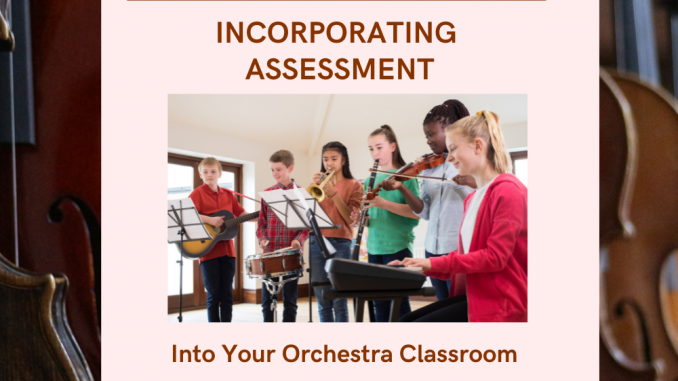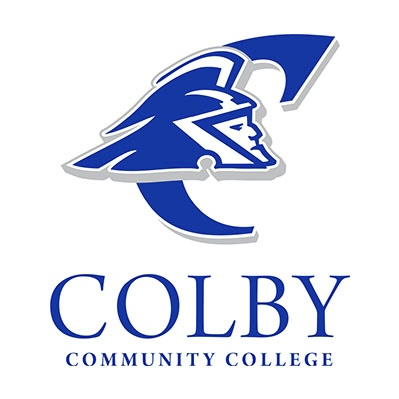
Finding the Balance between Assessment and Rehearsal
By Daniel Lytle (KMEA member)
Reprinted with permission from the NAfME Music in a Minuet blog.
I find accurately assessing my orchestra students to be challenging. It is difficult to accurately assess individual students in a group setting—or when you do assess students individually, that takes time away from rehearsal. I wanted to solve these problems and find strategies to assess my class as a whole and assess individual students without too much class time. To find solutions to these problems I read many journal articles on how best to assess in music classrooms. I also wanted to see if these practices were being used in current orchestra classrooms. So, I interviewed three orchestra teachers from my school district who I knew excelled in assessment strategies. The teaching experience of the teachers ranged from eight to 32 years.
I learned that along with common problems of assessment, many teachers had common goals of maximizing class time, keeping accurate records of students’ progress, informing future teaching, and fostering lifelong music learners. To achieve these goals and still administer authentic assessment, teachers used strategies including informal and formal assessments, assessing music literacy, using self-assessment, and creating portfolios.
Informal Assessments
After researching and conducting interviews, I found that most teachers wanted to avoid wasting any class time. To maximize instruction, the teachers I interviewed explained they are constantly conducting informal assessments from the podium. Most music teachers are great at this type of assessment. When we hear something is incorrect, we notice and fix it! How can we translate this into consistent daily assessment?
Example: Playing for Attendance
Teacher #2 had his elementary students play one to three notes by themselves at the beginning of each class as a way to take roll. He explained how much can be assessed with just a few notes. This informal assessment also lets you hear the individual student, which was something that each teacher thought was very important. He could then give short individual feedback regularly and keep the class moving.
Take Individual Notes
Sometimes in a large class, it can be difficult to hear every student individually. To achieve the goal of accurate student records, I found effective teachers take notes on their students. During a rehearsal, Teacher #3 made a note in her electronic grade book if she noticed a student doing well or making a mistake. She keeps track of these individual student notes in an electronic grade book. Over time this information shows how students are progressing. She even color-codes her grade book to show the skill level of each student. She says, “This visual aid helps to make sure no students fall through the cracks.”
Take Rehearsal Notes
Have you ever started a rehearsal or lesson covering “new” material only to have your students remind you that you covered the material last class? Taking notes on what you covered in each class and what concepts your group still needs to work on will avoid wasting time. It is also a type of informal group assessment. You are less likely to accidentally reteach concepts students have mastered when you take conscientious notes. I personally take notes on each lesson I teach in my weekly planner.
Formal Assessment: Playing Tests and Rubrics
A more formal way to assess is with playing tests. They provide very specific data for each student but can be difficult to administer. If you do them during class and are the sole teacher, you must give up a whole day of instruction to hear everyone. You could have students record their test in a separate room, but this can cause a distraction.
The three teachers I interviewed suggested administering playing tests by having students record themselves outside of class time. The biggest benefit is that it saves class time. Another benefit is that students experience less test anxiety knowing they have multiple attempts. It eliminates the peer pressure from having students waiting outside the practice room while they record. Ultimately this will produce a better test experience and result.
One final hurdle to overcome is the logistics of collecting all the tests. Instead of keeping track of emails with video files the use of technology specifically designed to collect video can help. Two teachers I interviewed use the app See Saw; one uses Google Classroom. I recently started using a website called Flipgrid. These apps or websites provide a premade platform to organize and collect student submissions. Teachers can give recorded or written feedback and even post messages for individuals or whole classes to see.
After collecting videos in one of these digital platforms, the tests will need to be graded. To make grading the tests fast and less subjective rubrics should be used. A custom rubric with specific parameters allows for the teacher to design it specifically for each test. Teacher #3 suggested showing the students the rubric prior to the test so they know what is expected of them.
Formal Assessment: Music Literacy
Playing tests provide a great way to assess students’ playing ability. It does not, however, assess the student’s musical literacy or their ability to understand music theory. To assess literacy and theory knowledge, traditional pen-and-paper assignments can be used but take time to create and grade. With today’s technology, there are many paperless options that other orchestra teachers have already created to assess music literacy and theory.
Teacher #1 expressed how she is moving from written music literacy quizzes to electronic versions using a website called Boom Cards. Some other platforms that I discovered—Google Forms, Kahoot, Blooket, and musitheory.com—provide ways to digitize and automatically grade music literacy and theory assessments. The amount of premade quality assessments has increased even more after many orchestra teachers had to learn how to teach online in 2020!
Self-Assessment
One of my goals is to help my students become life-long musicians. This means they will need to be able to play their instrument on their own and problem solve without a teacher present. The teachers I interviewed had similar goals, and they encouraged independent problem solving by using student self-assessments. An easy informal way to have students self-assess is to simply ask them what they hear during a rehearsal. Teacher #3 pointed out students often know when they sound good or bad. Teacher #2 added sometimes students will suggest things they had not thought of. To encourage more critical thinking, Teacher #3 has her students assess their own previously recorded playing tests based on the same performance rubric she uses.
Portfolios
If you want to implement frequent self-assessment of previous playing tests, a digital portfolio could be useful. If you use some of the apps mentioned for collecting video recordings, you will not need to create a portfolio from scratch. These apps can sort videos by students and creates a digital timeline to track progress. A digital portfolio that is accessible by the students can be a very powerful tool for them to hear their mistakes and recognize successes. Teacher #2 likes to show his elementary students their first playing tests compared to one of their last ones to highlight how much progress they made. If a digital portfolio is kept from elementary school all the way to high school, it would be amazing documentation of a student’s growth! Lastly, a portfolio can be tangible evidence of learning to share during parent-teacher conferences or with administrators.
Making the Grade
The final thing I asked my participants was how assessment fits in the overall grades of their students. There is so much current literature about music teachers putting too much weight on participation. I was surprised to find the weight of assessment in the grade book varied greatly among the participants. Teacher #1 said assessments were about 50% of his students’ overall grades. While Teachers #2 and #3 based only 10% and 20% of the students’ overall grades on assessment.
This was unexpected since these teachers used assessments frequently, while their grade books did not always show it. A common reason for the lack of assessment and large use of participation points was to keep ensemble enrollment high. They did not want bad grades based on playing tests to discourage students from continuing. Creating a fun and social class is definitely a large portion of an orchestra class. So, requiring participation in class and attendance at concerts can create a positive culture. Participation in a successful concert can be a lasting memory for a student and one that keeps them invested in the class.
Although of the teachers I interviewed the students’ grades may have been based largely on participation, they had successful programs with students who really knew how to play. I attribute this to their use of assessment to inform their future teaching and keep track of their students’ skill levels. I realized there are benefits to using assessment for the teacher and student even it is not seen by percentages in the grade book. Whether assessment was a large part of their grade book or not, these teachers were giving their students a great learning experience with the help of assessment strategies.
I now challenge you to use more assessment in your classroom. If it seems like you will have to make a lot of changes to incorporate all of these strategies, you should start with just one. Seamlessly incorporating all the types of assessment discussed in this article will take time. This year I assigned more at-home playing tests. I hope to use more self-assessment next year. Good luck!
About the author:
NAfME member Daniel Lytle is currently teaching elementary and high school orchestra in Olathe, Kansas. He also teaches private cello lessons to a wide range of students. He has a Bachelor’s Degree in Music Education from Washburn University and a Master’s Degree in Music Education from Emporia State University, and is a member of the Kansas Music Educators Association. Daniel also enjoys playing cello, arranging music, and spending time outside. Email Daniel Lytle here.















